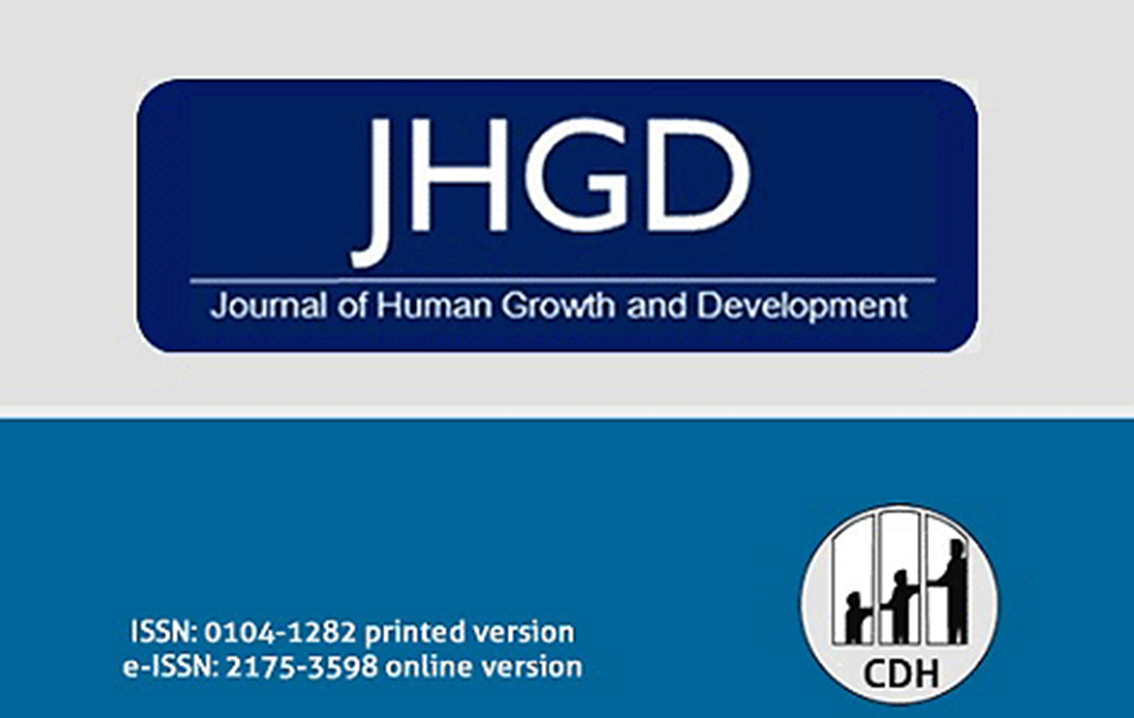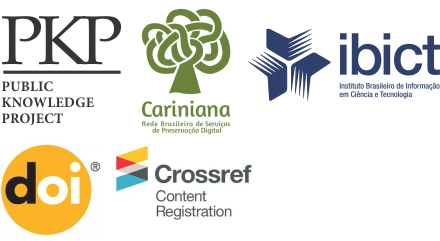Is there an association between the value of forced expiratory volume in the 1st second, the Asthma Control Test and a Control Framework by Global Initiative for asthma in asthmatic children and adolescents treated with inhaled corticosteroids?
DOI:
https://doi.org/10.7322/jhgd.v29.9530Keywords:
Asthma, Questionnaires, Children, Adolescents, SpirometryAbstract
Objective: Evaluate the presence of association between the classification of the level of asthma control, using the method proposed by the Global Initiative for Asthma (GINA), the Asthma Control Test (ACT)/Childhood-ACT and the forced expiratory volume in the 1st second (FEV1), in asthmatic children and adolescents treated with inhaled corticosteroids, followed up at the National Institute of Women's, Children's and Adolescents' Health FernandesFigueira of the Oswaldo Cruz Foundation (IFF / FIOCRUZ).
Method: A cross-sectional study was carried out with a review of the medical records of all children between 7 and 17 years of age followed up at the Asthma Outpatient Clinic and referred to the Respiratory Insertion Test (PFR) sector between March 2013 and September 2014. In the same day were applied the C-ACT/ACT questionnaires, an asthma control method proposed by the GINA and the FEV1 value in a spirometrictest.
Results: From the total number of records evaluated (72), 16 children were excluded because they did not meet the required criteria for performing spirometry. The sample studied (56 children) was predominantly male (58.9%) and median age was 12 (7-17) years. It was observed an association between FEV1 and GINA values ??(p <0.01).
Conclusion: The results found in this study indicate that FEV1 measurement is a useful component among the instruments for assessing clinical control of asthma by GINA.
Downloads
References
2. Andrade CR, Chatkin JM, Camargos PAM. Avaliação do grau de controle clínico, espirométrico e da intensidade do processo inflamatório na asma. J. Pediatr. 2010;86(2):93-100. DOI: http://dx.doi.org/10.1590/S0021-75572010000200003
3. Sociedade Brasileira de Pneumologia e Tisiologia. Diretrizes da Sociedade Brasileira de Pneumologia e Tisiologia para o Manejo da Asma - 2012. J Bras Pneumol. 2012;38(suppl1):S1-46.
4. Demoly P, Paggiaro P, Plaza V, Bolge SC, Kannan H, Sohier B, et al. Prevalence of asthma control among adults in France, Germany, Italy, Spain and the UK. Eur Respir Rev. 2009;18(112):105-12. DOI:
http://dx.doi.org/10.1183/09059180.00001209
5. Paiva M, Martins P, Carvalho S, Chambel M, Matos A, Almeida I, et al. Avaliação do controlo da asma: Utilização de diferentes métodos. Rev Port Imunoalergologia. 2010;18(3):227-41.
6. National Asthma Education and Prevention. Practical guide for diagnosis and management of asthma. 1997; p.5.
7. Zangirolami-Raimundo J, Echeimberg JO, Leone C.Research methodology topics: Cross-sectional studies. J Hum Growth Dev. 2018;28(3):356-60. DOI: http://dx.doi.org/10.7322/jhgd.152198
8. Oliveira SG, Sarria EE, Roncada C, Stein RT, Pitrez PM, Mattiello R. Validation of the Brazilian version of the childhood asthma control test (c-ACT). Pediatr Pulmonol. 2016;51(4):358-63. DOI: http://dx.doi.org/10.1002/ppul.23318
9. Miller MR, Hankinson J, Brusasco V, Burgos F, Casaburi R, Coates A, et al. Standardization of spirometry. Eur Respir J. 2005;26(2):319-38. DOI: http://dx.doi.org/10.1183/09031936.05.00034805
10. Pellegrino R, Viegi G, Brusasco V, Crapo RO, Burgos F, Casaburi R, et al. Interpretative strategies for lung function tests. Eur Respir J. 2005;26(5):948-6. DOI:
http://dx.doi.org/10.1183/09031936.05.00035205
11. Somashekar AR, Ramakrishnan KG. Evaluation of Asthma Control in Children Using Childhood-Asthma Control Test (C-ACT) and Asthma Therapy Assessment Questionnaire (ATAQ). Indian Pediatr. 2017;54(9):746-8. DOI: http://dx.doi.org/10.1007/s13312-017-1167-2
12. Fuhlbrigge AL, Weiss ST, Kuntz KM, Paltiel AD; CAMP Research Group. Forced expiratory volume in 1 second percentage improves the classification of severity among children with asthma. Pediatrics. 2006;118(2):346-56. DOI: http://dx.doi.org/10.1542/peds.2005-2962
13. Vidal AG, Escobar AMC, Medina MER. Correlación y concordancia entre instrumentos de controldel asma enniños. Rev Chil Enferm Respir. 2012;28(1):29-34. DOI: http://dx.doi.org/10.4067/S0717-73482012000100005
14. Ito Y, Adachi Y, Itazawa T, Okabe Y, Adachi YS, Higuchi O, et al. Association between the results of the childhood asthma control test and objective parameters in asthmatic children. J Asthma. 2011;48(10):1076-80. DOI: http://dx.doi.org/10.3109/02770903.2011.629356
15. Piacentini GL, Peroni DG, Bodini A, Bonafiglia E, Rigotti E, Baraldi E, et al. Childhood Asthma Control Test and airway inflammation evaluation in asthmatic children. Allergy. 2009;64(12):1753-7. DOI:
http://dx.doi.org/10.1111/j.1398-9995.2009.02068.x
16. Parente AAAI, March MFP, Evangelista LA, Cunha AL. Percepção da dispneia na crise asmática pediátrica pelos pacientes e responsáveis. J. Pediatr. 2011;87(6):541-6. http://dx.doi.org/10.2223/JPED.2144
17. Aragão LJL, Coriolano-Marinus MWL, Sette GCS, Raposo MCF, Britto MCA, Lima LS. Qualidade de vida na asma brônquica – a concordância das percepções das crianças, adolescentes e seus pais. Rev Paul Pediatr. 2012;30(1):13-20. http://dx.doi.org/10.1590/S0103-05822012000100003
18. Koolen BB, Pijnenburg MWH, Brackel HJL, Landstra AM, van den Berg NJ, Merkus PJFM, et al. Comparing Global Initiative for Asthma (GINA) criteria with the Childhood Asthma Control Test (C-ACT) and Asthma Control Test (ACT). Eur Respir J. 2011;38(3):561-6. DOI: http://dx.doi.org/10.1183/09031936.00173710
19. Dalcin PTR, Grutcki DM, Laporte PP, Lima PB, Viana VP, Konzen GL, et al. Impacto de uma intervenção educacional de curta duração sobre a adesão ao tratamento e controle da asma. J Bras Pneumol. 2011;37(1):19-27. http://dx.doi.org/10.1590/S1806-37132011000100005
20. Campos HS. Asma grave. J Bras Med. 2015;103(2):13-21.







